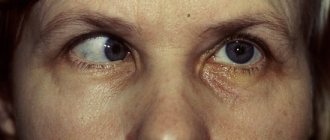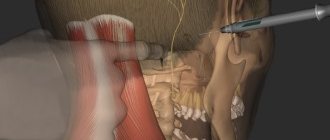Cotard's syndrome is a psychopathological complex belonging to the group of affective disorders. It manifests itself as a combination of depression with an anxious state (fears), a disturbance in the process of self-perception (depersonalization), a painful attitude towards the world around us (derealization) and the appearance of specific delusions. Delusional experiences are filled with fantastic ideas of grandiose proportions and global significance. Practicing psychiatrists consider this state to be the opposite of manic delusions of grandeur. The disorder can occur with a variety of mental, somatic, and neurological diseases.
Have you encountered manifestations of Cotard's syndrome? Contact the Leto clinic, which specializes in the diagnosis and treatment of psychopathology. We guarantee you an integrated approach, anonymity, efficiency and modern treatment protocols. Our psychiatrists try to choose the most effective, gentle and individual treatment plan for each patient.
Causes
The etiopathogenetic factors of the disease are currently not fully understood. One of the modern theories states that the causes of Cotard's syndrome are brain abnormalities, namely dysfunction of the frontotemporo-parietal neuronal circuits.
Possible causes of Cotard's syndrome:
- severe depression
- long-term use of large doses of antidepressants,
- previous operations,
- prolonged psycho-emotional stress, chronic stress, irritability are factors that eventually lead to the development of the syndrome.
Cotard's syndrome has not been identified as a separate nosology. It is a manifestation of various mental illnesses.
Pathologies manifested by Cotard's syndrome:
- schizoid disorders,
- dementia,
- depression,
- seizures,
- brain tumors,
- multiple sclerosis,
- TBI,
- progressive paralysis,
- atherosclerotic damage to the blood vessels of the brain,
- psychoses,
- infectious diseases - typhoid fever,
- melancholy,
- amnesia,
- severe intoxication,
- metabolic disorders.
Chronic stress leads to fatigue, tiredness, isolation, a persistent reluctance to see anyone, dissatisfaction with oneself, self-doubt, hopelessness, headaches, insomnia, exacerbation of skin problems, loss of interest in sexual life, cravings for alcoholic beverages and psychotropic substances. Severe depression and complete indifference to everything around develops. Outwardly, patients resemble dead people from horror films. Mentally ill people have a lower pain threshold. They are constantly haunted by pathological anxiety and feelings of guilt. Patients' behavior becomes aggressive over time. They do not take care of themselves, do not eat or drink. If patients do not commit suicide, they die from hunger and exhaustion.
History of discovery
In 1788, Swiss naturalist Charles Bonnet described one of the earliest cases of Cotard's syndrome.
Then the elderly woman was preparing food in her house, and when a draft blew, she felt like half of her body was paralyzed. After the unpleasant sensations passed, the woman persistently asked her relatives to arrange a funeral for her, dressing her in a shroud and placing her in a coffin. This situation continued for several days, during which she demanded that her maids, friends, and family members treat her as nothing less than dead. This bore fruit: the elderly woman’s relatives organized a wake for her, at which she did not stop fiddling with her shroud, relying on its “inappropriate” color. When she finally fell asleep, the family members undressed her and put her to bed. The strange psychological phenomenon passed, but returned every few months. Later, almost 100 years later, the French neurologist Jules Cotard will describe a case in which a patient (Mademoiselle X) came to him with a non-trivial complaint: she claimed that she had no stomach, brain, nerves, chest and intestines. At the same time, she was convinced that she was immortal, since in the absence of such vital organs only a chosen one could survive:
"I am immortal and will live forever."
For this reason, she stopped eating, not seeing the need for it. She died soon after, and this interesting incident was widely reported in the press. The mental disorder later received the name Jules Cotard.
Clinic
The first clinical sign of the disease is a feeling of anxiety. Some patients think that they are dead, others, on the contrary, feel their immortality. They are ridiculously delusional about their body size.
Thanks to statements about their own non-existence, their pain sensations decrease. By causing pain and harm to themselves, they are trying to prove that their bodies do not live, they are huge, but dead, there is no blood in their vessels. Patients often hear voices that direct their actions and destroy them. The patient is the greatest criminal who infected everyone around him with deadly infections and incurable diseases, became the cause of child mortality and the culprit of all wars. For this he will be severely punished.
Patients believe in the rotting and disintegration of the body, experience severe anxiety, do not make contact well, look for a catch in everything, and do not trust anyone.
- A mild degree is manifested by an inexplicable feeling of guilt and anxiety. Depending on the severity of the etiological factors, this form can last several years or reach full development in one to two weeks. Patients acquire a negative attitude, become gloomy and irritable.
- The average degree of Cotard's syndrome is manifested by the patient's disgust and hatred of himself, a tendency towards masochism, and a desire to harm himself or commit suicide. Patients inflict bodily harm on themselves, thereby trying to punish themselves for their miserable existence.
- A severe degree develops in the case of significant pathological changes in the central nervous system of patients. They plunge into the world of the dead, often visit the cemetery, and “talk” with the dead. Mentally they maintain a certain connection with the dead. Patients become extremely anxious, experience mental anguish, become depressed, and often commit suicide. The thought of the absence of life on the planet drives them crazy. At this stage, delusions and hallucinations appear.
Cotard's syndrome can occur in a mild form, in which a number of symptoms are absent. The pathology can have a fulminant or episodic course.
Main symptoms of the disease:
- Megalomania is the awareness of oneself as someone special: an alien destined to destroy all life, a destroyer or savior of the world, a being created to accomplish great things.
- Hypertrophied nihilism - the patient’s life has no meaning, thoughts of the absence of internal organs, refusal of food, water and treatment.
- Depression - increased anxiety, concern, nervousness, constant vigilance, suicide attempts, hypochondriacal state, immortality. Patients commit desperate acts, inflicting mortal wounds on themselves.
- Hallucinations - olfactory, auditory, visual. Patients smell an unpleasant odor from their bodies, see monsters, and hear orders about upcoming tests.
- Motor manifestations include wringing of hands, twisting of hair and clothes, constant walking from side to side, incoherent flow of words.
Cotard's syndrome is a multisymptomatic disease that develops gradually, has a complex and severe course, requiring others to have a special attitude towards the patient.
Video: patient with Cotard's syndrome
First signs
An unreasonable, inexplicable feeling of anxiety is the first sign of living dead syndrome. Then the person has the thought that he has already died, there is no world around. To these delusional ideas is added a feeling of immortality, and the perception of the size of one’s own body is disrupted. Patients express thoughts that the body is huge, terrible transformations are happening to their organs (for example, the intestines have rotted), and strange hallucinations occur (for example, an electric current passes through the skin).
The disease being studied is accompanied by the following manifestations:
- delusions of grandeur;
- excessive excitability and anxiety;
- suicidal tendencies;
- nihilistic delirium;
- depression;
- hallucinations;
- hypochondriacal conditions.
What is noteworthy is that patients usually simultaneously assert their own worthlessness and grandeur. For example, some believe that they were sent from a parallel world to harm the population, infect all living things with fatal diseases, etc.
As manifestations of nihilistic delirium, they regard, first of all, the belief in the insignificance of one’s own existence and all living things in general. It may seem to the patient that real life in its universal understanding is meaningless, and all development is irrational.
In combination with suicidal tendencies, thoughts about one’s own immortality may develop. Believing in immortality, a person can take desperate actions, trying to end his life as subtly as possible.
Diagnostics
Diagnosis of Cotard's syndrome is based on the clinical symptoms of the pathology. Psychiatrists diagnose and treat the disease. They talk with the sick person and his loved ones. If necessary, instrumental methods are used - CT and MRI to determine the anatomical and physiological features of the brain.
Difficulties in diagnosis are explained by the reluctance of patients to seek medical help. In their opinion, visits to specialists are pointless and impractical. They assure that treatment will not help the corpse. Only close people can notice in time the changes occurring in the patient’s behavior and take him to the doctor. Patients often get an appointment with a specialist too late.
Preventive measures
To protect yourself from the development of such a disease, try to get rid of depressive conditions in a timely manner. Protect yourself from stress, do not allow psychosis to occur. Naturally, lead a healthy lifestyle and avoid all kinds of head injuries.
In principle, there are no special preventive measures. However, if you feel unhappy or have unexplained anxiety, then do not hesitate to visit a psychologist or psychiatrist. It's not shameful, but it could save your life one day. Now you know what Cotard's syndrome is. You also know the symptoms and treatment of the disease. However, do not try to use the drugs yourself. It is much better if you consult a doctor. Be healthy!
Treatment
Treatment of Cotard syndrome is carried out in a neuropsychiatric hospital under the supervision of medical personnel. Only a specialist in psychiatry will be able to correctly select medications to restore mental health.
Drug treatment of Cotard's syndrome is aimed at eliminating the source of delirium. It consists of the use of the following groups of drugs:
- antidepressants – “Amitriptyline”, “Fevarin”, “Melipramine”;
- antipsychotics - “Rispolept”, “Ariprizol”, “Aminazin”, “Tizercin”;
- anxiolytics – “Grandaxin”, “Afobazol”,
- tranquilizers – “Phenazepam”, “Amizil”.
Electroconvulsive therapy is a method of applying low-intensity direct electric current to brain structures in order to achieve a therapeutic effect. Electroconvulsive treatment is currently a worthy alternative to psychopharmacotherapy. Indications for its implementation are psychoneurological diseases for which other treatment methods have proven ineffective. Due to its high efficiency and speed of onset of effect, electroconvulsive therapy is used as an emergency treatment.
During psychotherapeutic sessions, pathology is fought. This requires an individual approach to the patient and optimal contact with him. Trust must be established between doctor and patient. Rational psychotherapy is based on suggestion.
To achieve maximum effect, drug therapy should be combined with electroconvulsive treatment and psychotherapy. If these recommendations are neglected and not treated, the patient will sooner or later turn into an inanimate object.
Why does the disease appear?
Until now, not a single psychiatrist has been able to identify the exact reasons that provoke the development of this pathology. However, there are some assumptions. So, Cotard's syndrome can be caused by:
– An attempt to commit suicide with an electric shock.
– Severe depression or psychosis.
– Default of the brain system.
In principle, these reasons can cause any other mental disorder, so it is important to identify the problem in time and begin to fight it.
Prevention
To avoid developing Cotard's syndrome, you need to monitor your emotional state. Nervous strain and frequent stress lead to the development of depression with signs of suicide. It is necessary to remain calm and control yourself in any situation.
When the first symptoms appear, you should seek help from qualified specialists. Your favorite hobby, yoga, good music, massage, a bath with aromatic oils will help you relieve moral stress on your own. If these methods do not help, then it’s time to use mild sedatives.
Expert recommendations:
- avoid stress and head injuries,
- avoid depression and psychosis,
- eat right,
- play sports
- toughen up,
- walk a lot in the fresh air,
- try to find beauty in the ordinary.
Features of Cotard's syndrome
Research into Cotard's syndrome in psychiatry is currently necessary, since all the pathophysiological causes of its occurrence have not yet been fully elucidated. This is due to the fact that this psychopathological syndrome is quite rare in practice.
In one of the research materials that was carried out in 1999, data was obtained that included information about the stages of development of Cotard's syndrome.
In the first stage, hypochondria appears. A person constantly worries about the state of his health, although his worries are completely unfounded and greatly exaggerated. At this stage, psychotic depression occurs. Hallucinations and delusions may be present.
In the second stage, the syndrome gradually develops and consolidates, and delusions of denial begin to appear.
During the third stage, the patient’s perception of the world is completely disrupted, a distortion occurs, which leads to the inability to perceive reality, cessation of eating food and observing hygiene rules.
One study, which was conducted using the MEDLINE/PubMed database, analyzed clinical cases of Cotard syndrome that were described over a thirteen-year period (2005-2018).
In each individual case, a number of characteristics were recorded. A total of 55 papers described 69 case reports, where the clinical picture of Cotard's syndrome was analyzed.
In this study, three types of nihilistic delusions were identified:
1) Delusional ideas, when the patient believes that he does not exist on the physical (bodily) level, as well as on the spiritual.
2) Delusion, in which the patient is convinced that one of his body parts is missing; sometimes there are stories that some of the organs have disappeared or disintegrated, or they are missing.
3) Conceptual delusion, in which a sick person believes that the world around him has ceased to exist, there are no other people, etc.
The psychopathological structure of Cotard's syndrome contains the following factors:
1) depression of a psychotic nature, including delusional ideas of guilt, thoughts of suicide, one’s own guilt, eternal torment, hypochondriacal delusions, etc.
2) hallucinatory-paranoid syndrome with delusions of immortality and visual hallucinations, as well as nihilistic delusions (delusional ideas of the absence of one’s own existence).
3) nihilistic delusions, anxiety and auditory hallucinations.
It was found that Cotard's syndrome was more common in older patients with diagnoses such as organic psychotic disorder and major depressive disorder (psychotic depression).
Symptoms
The most common are nihilistic delusions regarding the body and existence. Other descriptions include:
- denial of reason
- brain,
- intelligence,
- pregnancy denial,
- delirious paralysis.
Find out more What is catatonic syndrome, signs, diagnosis
Nihilistic delusion may also include denial of the existence of various aspects of the body or self, that is, personal space, such as renunciation of life, non-existence of the soul, personal name, age, ability to walk, ability to eat, presence of heart, brain, liver, intestinal function , limbs.
Aspects outside the personal space may include the existence of the world, marriages, parents, children.
Forecast
It must be said that treatment does not always give good results. Often the patient's beliefs are so persistent that no explanation can change them. The prognosis of this pathology in most cases is unfavorable. Delirium leads to the destruction of one's own personality.
The fact is that the patient is no longer tied to reality and cannot soberly assess his condition. He does not feel the need for treatment, does not consider it necessary. It is not always possible to convince such a person to undergo treatment. In addition, patients may refuse therapy while already in a medical institution.
The difficulty of dealing with the problem also lies in the difficulties of diagnosing it. Since patients try to hide from others, it is not always possible to identify the disease. But with timely initiation of therapy, a positive outcome is likely.










